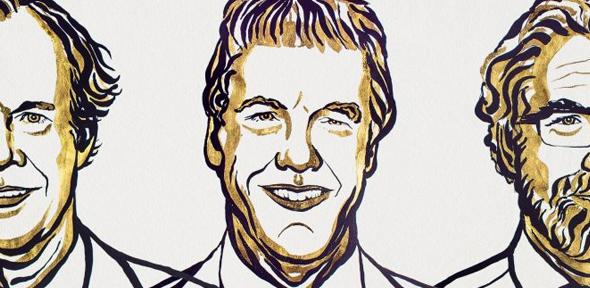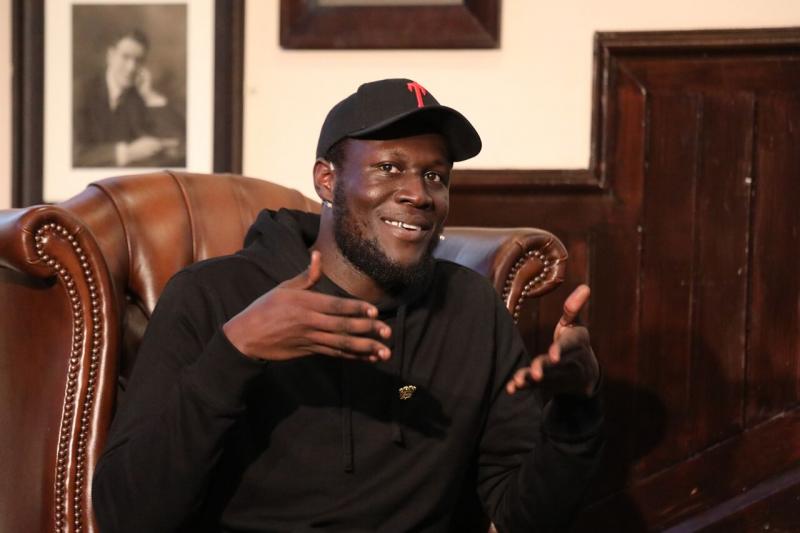Throughout October
9am-5pm weekdays
Fitzwilliam College, Storey’s Way, CB3 0DG
Black Cantabs: History Makers
From forgotten pioneers to modern trailblazers, the exhibition celebrates 260 years of Cambridge education for black Cambridge students and graduates, from the 1700s to the 21st century.
The portraits were originally displayed at Cambridge University Library last autumn. Further information here.
Access by appointment (Mon/Wed/Fri)
Downing’s Early Black Cantabs
Downing College, Maitland Robinson Library, Regent Street, Cambridge CB2 1DQ
Archive exhibition celebrating Downing College’s early black students, dating back more than 100 years. This exhibition shares research carried out in support of the Black Cantabs Research Society by the College Archivist.
Please contact College Archivist Jenny Ulph
Sunday 13 October, 2pm-4pm
Queens' College, Cambridge, CB3 9ET
Caribbean Chill & Chat (Cambridge University African Caribbean Society)
Contact: @cambridgeacs on Instagram/Twitter, Cambridge ACS Facebook
Monday 14 October, 5.30pm – 6.30pm
St John's College Fisher Building, St John’s Street, CB2 1TP
Annual Race Equality Lecture: David Lammy MP in Conversation with Gillian Joseph
Labour MP David Lammy will be in conversation with Gillian Joseph, broadcaster on Sky News, discussing his personal journey and how race and racism has shaped his life, as well as a variety of topics including: how racism manifests itself in organisations today, the barriers to career opportunities faced by BAME staff and how to overcome them, the lack of BAME role models in senior positions, and how to increase BAME access and representation in leading professions.
More information here.
Tuesday 15 October, 12.30pm – 1.30pm
The Jubilee Centre, The Jubilee Lounge, St Andrews House, 59 St Andrews Street, CB2 3BZ
Gandhi, King & Mandela: From ‘Nation’ to Globe?
This talk offers a comparative perspective of the three great 20th century change-makers, looking at similarities and differences, and lessons on social change for the 21st century. Join Philip Powell at the Jubilee Lounge.
More information here.
Thursday 17 October, 6pm - 7pm
St John's College Old Divinity School, All Saints Passage, CB2 1TP
Maroon Nation: The History of Revolutionary Haiti
Johnhenry Gonzalez discusses his new book on the history of Haiti and how the country went from the most profitable slave colony to the site of the only successful slave revolt in modern times.
More information here.
Saturday 19 October, 12pm-6pm (TBC)
The Cambridge Union, 9a Bridge Street, Cambridge CB2 1UB
Motherland Conference (Cambridge University African Caribbean Society)
Contact: @cambridgeacs on Instagram/Twitter, Cambridge ACS Facebook
Thursday 17 October, 6.30pm – 8pm
BAME Speed Mentoring Sessions
Newnham College, MCR
BAME students only. Sign up here. Any questions please contact: A S Grieve at community@gatescouncil.org.
Friday 18 October, 7.30pm – 9.30pm
Black History Month Comedy Night
Pembroke College, New Cellars
No pre-booking required. All welcome. Donations will be collected on the door
Saturday 19 October, 7.30pm – 9.30pm
Unitarian Church Hall, Emmanuel Road, (entry from Earl Street), CB1 1JW
Locks Opened: The Chesapeake Waterways and the Underground Railroad
Discover the true stories of some of the people who used the waterways in their flight to freedom. Taken from the book by William Still, a conductor of the Pennsylvania Underground Railroad, the show will introduce you to Harriet Tubman, “Boxcar” Brown and Ellen Craft, and many others, and the hardships they faced and the sacrifices they made.
By telling a selection of their stories, Sheila Arnold demonstrates what people can overcome when the desire for freedom and the pressure for change become overwhelming.
Sheila is well known in the United States for her historical storytelling, and her performances based on black history and on the civil rights movement.
More information here.
Monday 21 October, 6pm-7.30pm
Panel discussion
Sidney Sussex, Old Library
Sidney’s BME officers have organised a panel discussion featuring black academics and activists, and focusing on the contributions of black Britons, the state of scholarship on black Britons, being black in academia, and the contemporary effects of the legacy of slavery and empire. There are free tickets for the discussion available to the public, however a dinner and drinks reception following the discussion will be open to the Sidney community only.
For more information contact: bme@sscsu.org.uk
Monday 21 October, 5pm-7pm
Knox Shaw Room, Sidney Sussex College, Sidney Street, CB2 3HU
'Lore and Logics: The Liberal State, the Carceral State, and the Limits of Justice and Inequality in Post-war America'.
A Cambridge American History Seminar by Dr Heather Thompson, Sidney Sussex Fellow and 2019-2020 Pitt Professor of American History and Institutions. Dr Thompson is a Pulitzer Prize winner and a leading scholar of the history of mass incarceration in the US.
For more information contact jmg216@cam.ac.uk
Tuesday 22 October, 7pm – 9pm
Gonville and Caius College, Bateman Auditorium, Trinity Street, CB2 1TA
Marsha P. Johnson on Film
A screening of Tourmaline & Sasha Wortzel’s short film, ‘Happy Birthday, Marsha!’, celebrating trans activist and queer icon Marsha P. Johnson. Followed by a critical screening of a documentary featuring archival footage of Marsha, Sylvia Rivera, and other activists.
The Stonewall Uprising, which took place in Greenwich Village, New York, in June 1969, is generally considered to be a turning point in the history of the LGBTQ+ community. The riots helped to spark a queer revolution both within the United States and around the world, leading to the creation of the gay liberation movement and the first gay pride parade the following year.
More information here.
Tuesday 22 October, 6pm - 7pm
Wolfson College, Gatsby Room, Chancellor's Centre, Barton Road, CB3 9BB
Rethinking Early Anti-Slavery: North Africa & Beginnings of Atlantic Abolitionism
The Germantown Petition, written in Pennsylvania in 1688, is usually judged to be the first collective statement against slavery in world history and an initial, if faltering, step in the abolition of the Atlantic slave trade. But, despite its significance, the circumstances that shaped its composition have received little attention. With Justin Meggitt, Senior Lecturer in the Study of Religion.
More information here.
Friday 25 October, 6.30pm-9.30pm
Location TBC
Chill & Chat (Cambridge University African Caribbean Society)
Contact: @cambridgeacs on Instagram/Twitter, Cambridge ACS Facebook
Friday 25 October, 7.30pm – 9pm
Panel Discussion: Take Back the Academy! Integrating Student Activism and Research
University Centre, Gates Common Room
No pre-booking required. All welcome. Any questions, please contact: A S Grieve at community@gatescouncil.org
Friday 25 October, 5pm – 6.30pm
Immigration Talk with Sohini Alg-Nijjar
Pembroke College, Nihon Room
No pre-booking required. All welcome.
Monday 28 October, 2pm-4pm
Cambridge University Library, Milstein Seminar Rooms, West Road CB3 9DR
Taking Up Space: The Black Girl’s Manifesto for Change
Book signing. Free. Drop-in. All ages. Full access.
Cambridge graduates Chelsea Kwakye and Ore Ogunbiyi will provide a short talk about their first-hand experience of being a minority in a predominantly white institution, before signing copies of their book, Taking Up Space, which will be available to purchase.
Tuesday 29 October, 6.30pm-9.30pm
Downing College, Regent Street, Cambridge CB2 1DQ
Black History Month Formal (Cambridge University African Caribbean Society)
Contact: @cambridgeacs on Instagram/Twitter, Cambridge ACS Facebook
Other events of interest:
Saturday 19 October, 3pm - 4pm
Institute of Continuing Education, Madingley Hall Madingley, CB23 8AQ
How to Change History
This lecture is not about time travel. It does, however, discuss how to go about changing the way we remember events in the past. Drawing on her activism on the part of victims of Nazism in the Channel Islands, Dr Gilly Carr reflects on her decade-long crusade to change how people remember them.
More information here.
Tuesday 22 October, 5pm - 7pm
King's College, Keynes Hall, King's Parade, CB2 1ST
Hope and Fear in Response to Religious Diversification
Religious diversification, particularly in very heterogeneous places such as London, is connected to some of today’s most controversial political questions. This panel event with leading politicians, religious experts and activists from London will discuss how to respond to the rapidly evolving challenges around economic deprivation, racism, Islamophobia, extremism, and gender-based discrimination in the UK's most ethnically and religiously diverse areas.
More information here.
Tuesday 22 October, 6.30pm – 7.30pm
Anglia Ruskin University, Lord Ashcroft Building - LAB026, East Road, CB1 1PT
Hate Crime: Time to Stop the Hate
The Macpherson Report, commissioned to investigate the death of Stephen Lawrence, defined the meaning of racist incidents. This term is what we now call Hate Crime.
Anyone can experience Hate Crime and it can be because of someone’s faith, ethnicity, gender, sexual orientation or disability – which are the five officially monitored strands of Hate Crime.
During this lecture we will look at:
- What Hate Crime is and how to recognise it
- What Hate Crime looks like and understanding its many forms
- The impact it has on those who experience it
- How we can better support people who experience it
- What is being done to ‘Stop the Hate’
Speakers are:
Rose Simkins - Chief Executive of the leading national charity, Stop Hate UK
Chris Long - Chief Crown Prosecutor for the East of England Area
Sergeant Phil Priestly - Cambridgeshire Police
The event will be chaired by Graham Lewis, who is Chair of the Board of Trustees of Stop Hate UK, Special Advisor on Hate Crime to the Encompass Network, and an activist on equality in Cambridgeshire.
Presented by Stop Hate UK, www.stophateuk.org
More information here.
Wednesday 30 October, 4pm-5.30pm
Michaelhouse Cafe, Trinity Street, Cambridge CB2 1SU
400 Years of Return: African Diasporas
2019 marks 400 years since the first enslaved Africans arrived in the United States.
‘The Year of Return’ celebrates the cumulative resilience of all the victims of the transatlantic slave trade who were scattered and displaced through the world in North America, South America, the Caribbean, Europe and Asia. This panel will explore contemporary lives in the diasporas and the remaining significance of return.
More information here.






















